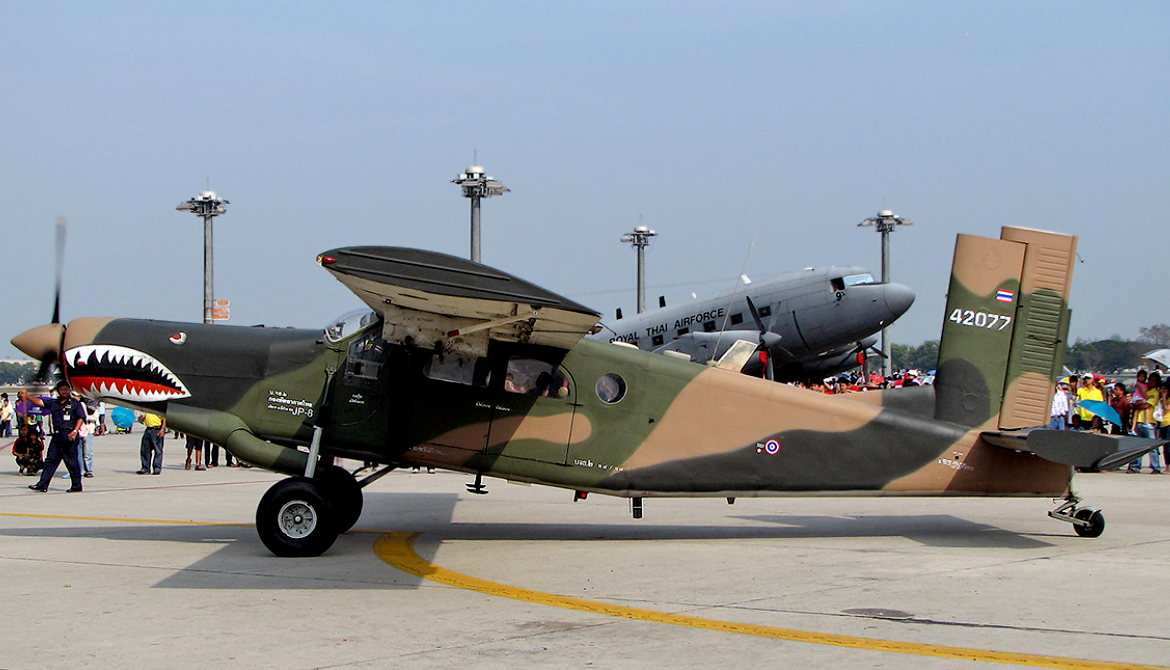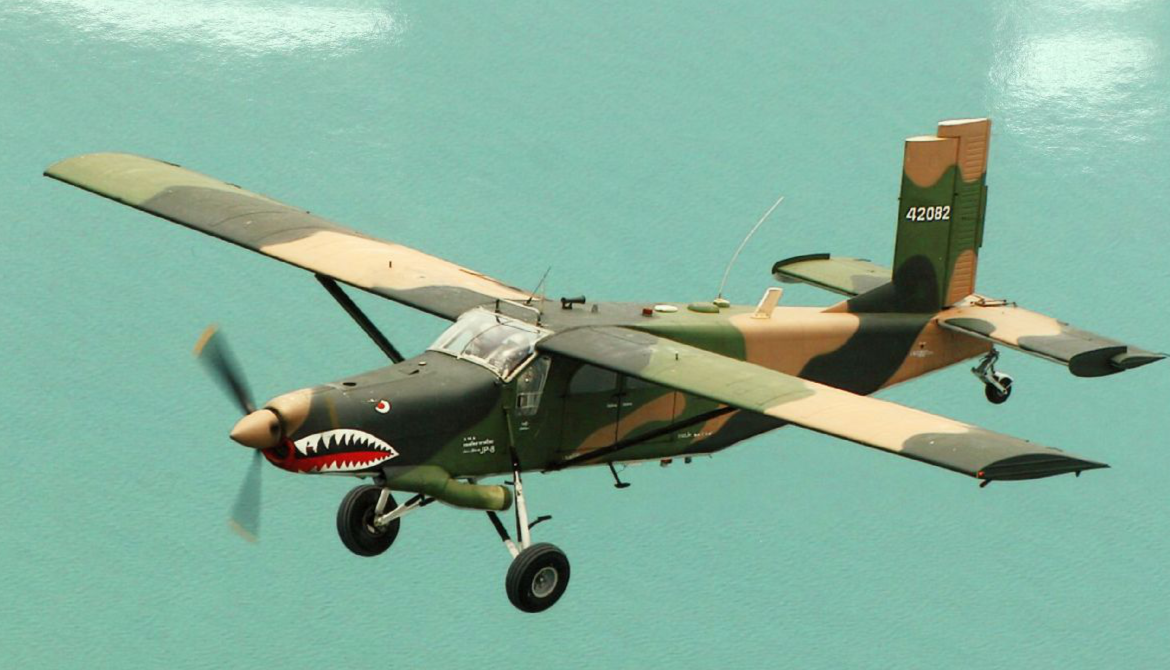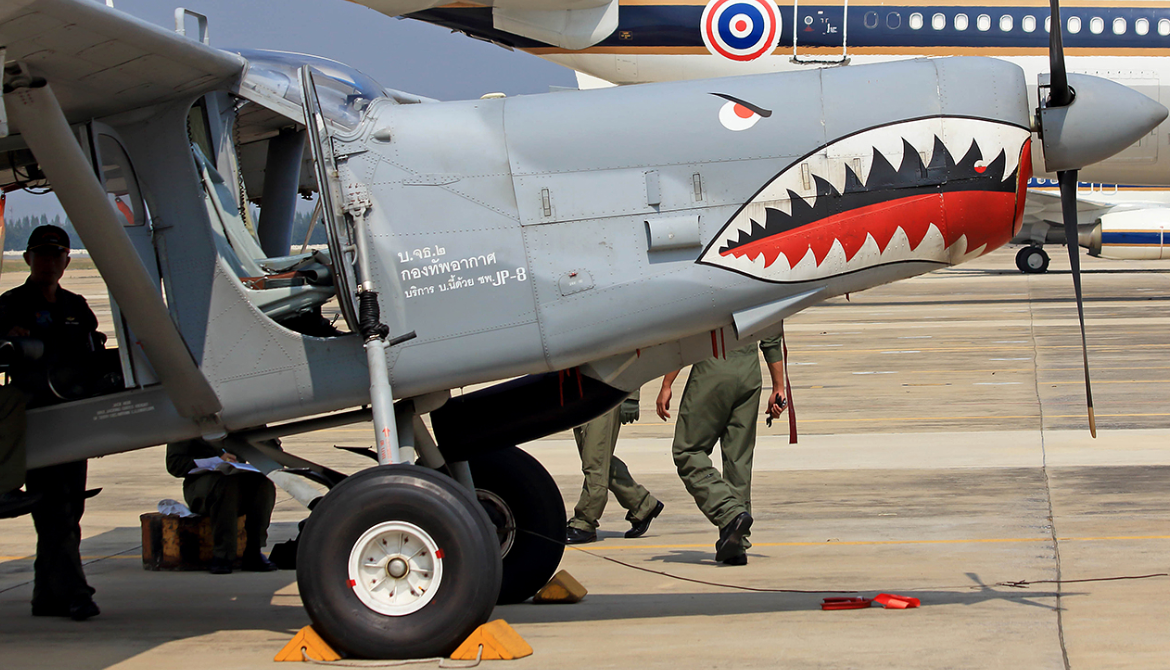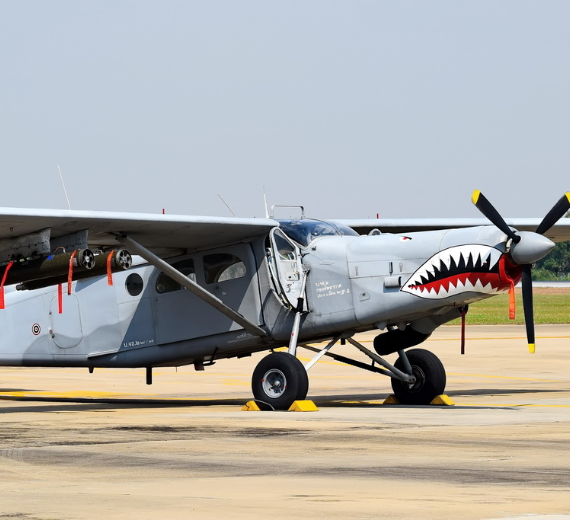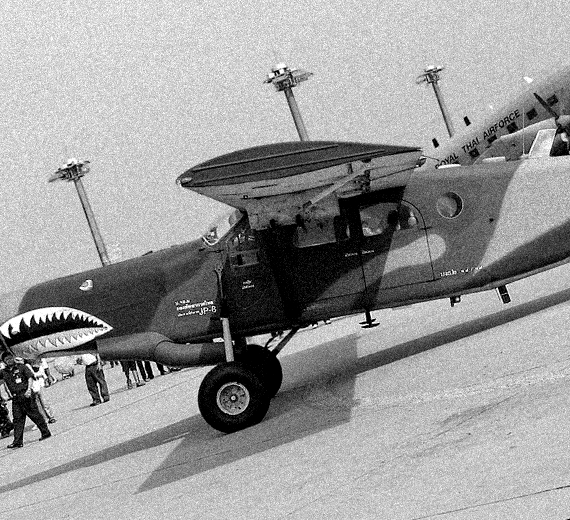Fairchild Aviation
AU-23 Peacemaker
 |
|
| Role | Armed gunship, counter-insurgency, utility transport |
|---|---|
Manufacturer Fairchild Aircraft First flight 1971 Primary users United States Air Force Royal Thai Air ForceDeveloped from Pilatus PC-6 Porter
.
History Fairchild Aviation Corporation
Fairchild AU-23 Peacemaker
Role Armed gunship, counter-insurgency, utility transport
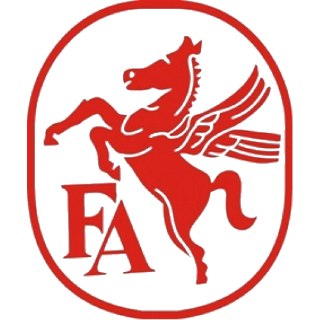
The Fairchild AU-23 Peacemaker is an American armed gunship, counter-insurgency, utility transport version of the Pilatus PC-6 Porter for the United States Air Force. A total of 35 were built under license in the United States by Fairchild Industries, for use during the Vietnam War in the early 1970s. All aircraft were later sold to the Royal Thai Air Force.
In May 1971 the Aeronautical Systems Division at Wright-Patterson Air Force Base, Ohio, began work on a project to evaluate the potential use of armed light utility short takeoff and landing aircraft in Southeast Asia. The program, named Credible Chase, was designed to add mobility and firepower to the South Vietnamese Republic of Vietnam Air Force (RVNAF) in a relatively short time. Two commercial aircraft were selected for testing: the Fairchild Porter and the Helio Stallion. Initial performance testing was conducted with leased aircraft at Eglin Air Force Base, Florida, and was successful enough to warrant a combat evaluation.
Operational history

Fairchild AU-23A Peacemaker at Eglin AFB, Florida in 1972 The combat evaluation, PAVE COIN, was done in June and July 1971. The AU-23A was tested for eight possible missions: armed escort of helicopters, close air support, hamlet defense, STOL airlift and resupply, armed reconnaissance, border surveillance, forward air control, and counter infiltration. USAF crews flew 73 missions (94 sorties) and RVNAF crews flew 68 missions (85 sorties). Several types of weapons were test dropped/fired including 2.75-inch (70 mm) rockets (explosive and smoke), CBU-14 cluster bombs, MK 6 Mod 3 flares, and MK 81, -82, and -106 practice bombs. More than 8,000 rounds of 20mm ammunition were fired, both high explosive incendiary and target practice tracer types. Several problems were discovered during the PAVE COIN program, the most serious was the extreme vulnerability of the aircraft to all but the lightest antiaircraft fire (below 12.7mm). Despite the problems, the USAF continued with the development program and ordered 15 AU-23As for further testing.
0
HrEndurance
0
KmCombat RANGE
0
Km/hAircraft Speed
0
Max Crew
Photo Gallery
Fairchild Aviation Corporation
Fairchild AU-23 Peacemaker


Fairchild Aviation Corporation. Originally known as the Seversky Aircraft Company
Fairchild AU-23 Peacemaker
General Info
-
-
- Crew: 1
- Length: 38 ft 1 in (11.61 m)
- Wingspan: 36 ft 5 in (11.10 m)
- Height: 12 ft 7 in (3.84 m)
- Wing area: 260 sq ft (24 m2)
-
Powerplant
-
-
- Height: 14 ft 4 in (4.37 m)
- Gross weight: 6,100 lb (2,767 kg)
- Powerplant: 1 × Garrett TPE-331-1-101F turboprop engine, 650 hp (480 kW)
-
Performance
- Maximum speed: 148 kn (170 mph, 274 km/h) at take-off power, 5,000 ft (1,524 m) altitude, 6,000 lb (2,722 kg) gross weight
- Cruise speed: 77 kn (88 mph, 142 km/h) at maximum continuous power, 129 kn (239 km/h) combat cruise
- Range: 360 nmi (420 mi, 680 km)
- Combat range: (201 mi, 323 km)
- Endurance: 4.84
Links to Youtube & Others
Royal Thai Air Force 531 Sqn AU-23A JTh2-20/19 coded 42079 (former FY 74-2079) crash-landed in Khlong Hoi Khong district around noon on 5 March 2019.
Fairchild Corporation AU-23 Peacemaker
Development of the type continue and in 1935 the Bf 108B appeared with the fin and rudder having undergone modifications.
Youtube Link
Conceived as a competitive aircraft the Bf 108 would take part in the 1936 Berlin Olympics.



